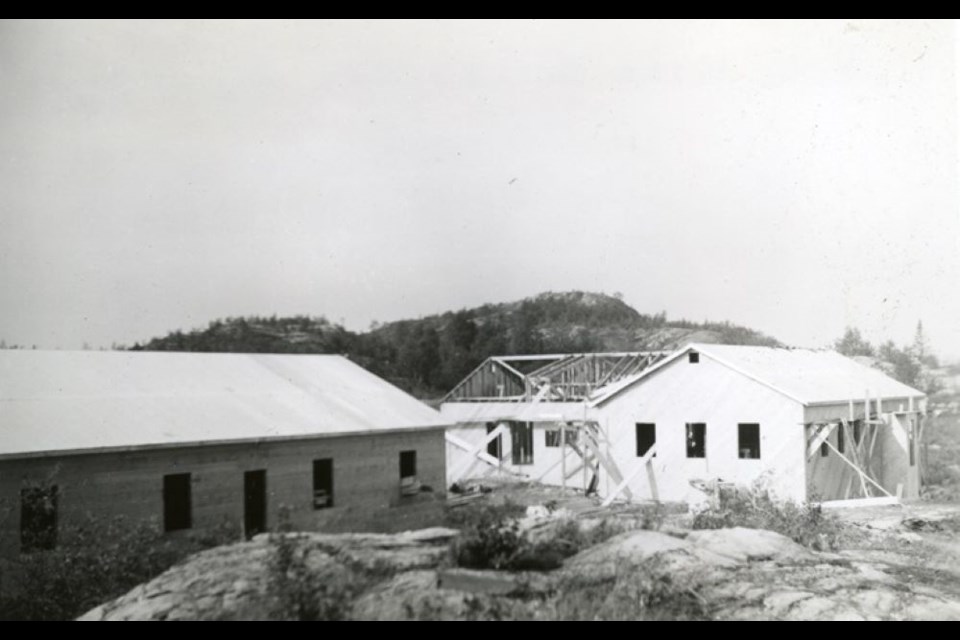Many in Sault Ste. Marie understand the importance of F.H. Clergue and his contribution to the creation of Algoma Steel Corporation, which is integral to the history of Sault Ste. Marie. However, we often forget those who worked in other jobs in the area that supported the corporation and its many industries.
These employees not only worked to make a living to support themselves and their families but also contributed to the economic prosperity of the growing town.
One of Clergue’s industrial ventures was the opening of the Helen Mine in 1900 which was in operation until 1903 when Clergue’s Industrial Empire collapsed. The Helen Mine re-opened in 1904 and continued to produce large quantities of hematite ore.
In 1906, a 17-year-old from Finland by the name of Frank Koivisto came to work at the Helen Mine.
Young Frank met up with his older brother who showed him around the grounds. Though many of the workers were Finnish, Italian and French, often the foremen were English and had a difficult time pronouncing their names so the workers often chose English names. It was decided that Frank would be referred to as Frank Thompson, partly because his brother had taken the name Thompson, as well. However, not every worker had to change their names, those with names like Maki and Walli were able to keep their own names, since they were easy to pronounce.
Living conditions at the mine for the 150 workers and about 50 relatives of the workers could be very primitive.
It consisted of a company camp for the single men and some cabins for the families. These accommodations cost $18 to $25 a month to rent.
Their diet consisted of boiled meat and potatoes every day. During some years, food was harder to come by than others, depending on how fast winter set in. One year the last boats were unable to reach the camp with supplies, due to an early freeze and the camp was forced to eat a steady diet of turnips after the potato supply ran out.
In 1906, the miners made a good wage, especially when it was compared to what other jobs were paying at the time. Starting wage was $0.25 per hour for most of the miners, the drummers did piece work and received $0.35 for every car that was loaded, pushed, dumped and returned.
The highest wages were given to the drillers who made $4.50 per day. The company camp had amenities like food and clothing stores but no banks. Their cheques had to be sent to Sault Ste. Marie and then the money would be mailed back to the employee. Many of the miners were able to accumulate quite a sizable sum of money.
Working in the mine, however, could be a dangerous job. During Frank’s first year on the job, there were three deaths.
A man by the name of Ed Powers fell to his death in Shaft No. 2. This was judged to be an accident with no blame.
The second death was a man named James Newell who was going up in the cage when a “lander” by the name Contardo, who did not see him, pushed an empty car on him crushing him. An inquest was held and the decision stated that Newell died due to Contardo’s carelessness.
The third death was Jani Walli who was not paying attention and sat down on a divider on the fourth level. The cage was going up and it crushed Walli.
In 1910 the mine was expanded increasing the workforce to 200 workers. By this point, however, Frank had returned to Finland to marry Hilda Maki. Upon their return to the area, they built a log cabin next to the railway tracks.
In 1911, Frank and Hilda had a daughter Sylvia Elvira Thompson who was delivered by the company doctor.
During this same year, disaster struck at the mine once again when three men died. The men were working with dynamite which went off prematurely, killing two of the men in the explosion. The third man was thrown into the mining shaft and was killed on impact. The third man was John Thompson, Frank’s brother.
The Algoma Central Railway line to Sault Ste. Marie opened up in 1912 and Frank and his family left the Helen Mine, leaving behind not only the mine but many memories of his time there.
Each week, the Sault Ste. Marie Public Library and its Archives provides SooToday readers with a glimpse of the city’s past.
Find out more of what the Public Library has to offer at www.ssmpl.ca and look for more Remember This? columns here.
